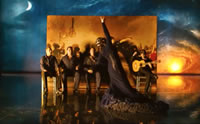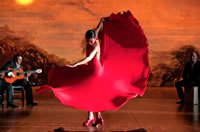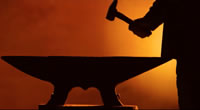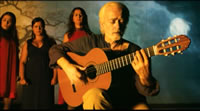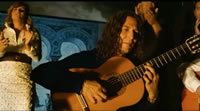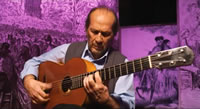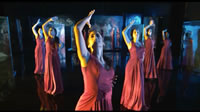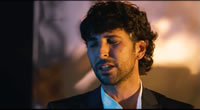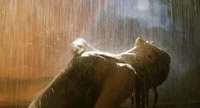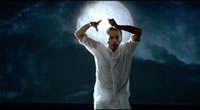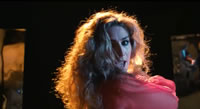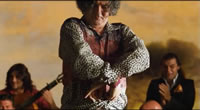Flamenco, Flamenco (2010)
Cast includes: Sara Baras, José Miguel Carmona, Montse Cortés, Paco de Lucia, Farruquito, Israel Galván, José Mercé, Estrella Morente, Soledad Morente, Niña Pastori, Miguel Poveda, Manolo Sanlúcar, Tomatito, Eva Yerbabuena, Antonio Zúñiga
Director: Carlos Saura (Tango, iAy, Carmela!)
Genre: Music | Dance (97 minutes)
As the camera looks up at what appears to be an artistic, modern airplane hanger, we hear a tap. Eventually, the tap begins to sound like a rhythm with hints of base… or maybe not. We take in the enormous space of the Seville Expo ’92 until we eventually see a stage with enlargements of paintings by Goya, Velasquez and other Spanish masters, as well as modern works… many with references to flamenco. A black and white ink drawing becomes transparent and we see our first flamenco performance… the sensual sounds, the traditional guitar, the highly disciplined dance and the rhythms… there’re taps on the shoes, clapping of hands, as well as accompanying rhythms tapped on wood, iron, drums, etc… it’s an amazing amalgamation of rhythms. One of the first things we notice is the relationship between flamenco and American tap dancing. However, flamenco is more than just tap dancing… as we’re about to see.
Flamenco connoisseurs may rather see a film that focuses just on their personal favorite styles of flamenco. However, most Americans know virtually nothing about flamenco. I, for example, was expecting castanets. (Flamenco has no castanets.) As one performance artfully blends into the next, we become aware that there are many different flamenco traditions as well as some styles that blend multiple traditions. Flamenco started in the late 1400s. The origins are ambiguous, but the Gypsies of Spain played a major role. In the earliest forms, the rhythm was quite simple… maybe a hammer on an anvil (Gypsies worked in steel) or tapping out rhythms with knuckles on a table. We see some of these styles in the film. Gradually, other influences were introduced and today some flamenco seems more like modern dance and jazz. The guitar is the most traditional instrument, but there are others instruments that are important in certain styles. And then there’s the singing… whether it’s a male or female singer, the voice is earthy, salty and soulful. There are no subtitles, so we don’t know what the songs are about. That’s probably a plus because words from ancient poems, etc, could be distracting.
Director Carlos Saura specializes in films about dance, which is a lot harder than it looks. In order to get many of the close-up shots, the camera work had to be choreographed along with the performances. And then there’s the sound recording, which is extremely difficult in an environment that isn’t a recording studio. But he manages to make us feel like we’re right there on stage. In addition, the artful linking of visual arts and performance art is very creative and interesting. The film includes modern flamenco performers as well as beloved older superstars. Whatever your favorites are, this sampling of flamenco will give you some idea of why the tradition has thrived for 600 years and why it has enthusiasts of all ages. Many of the performers have been learning, growing and expanding flamenco since childhood. Flamenco, Flamenco isn’t an exhaustive exploration of the art form… it’ll probably leave you wanting to experience more.

3 popped kernels
Flamenco music, dance and a 600-year-old tradition
Popcorn Profile
Audience: Grown-ups
Gender Style: Neutral
Distribution: Art House
Mood: Neutral
Tempo: Cruises Comfortably
Visual Style: Nicely Varnished Realism
Nutshell: Music and dance
Language: None
Social Significance: Pure Entertainment & Thought Provoking

